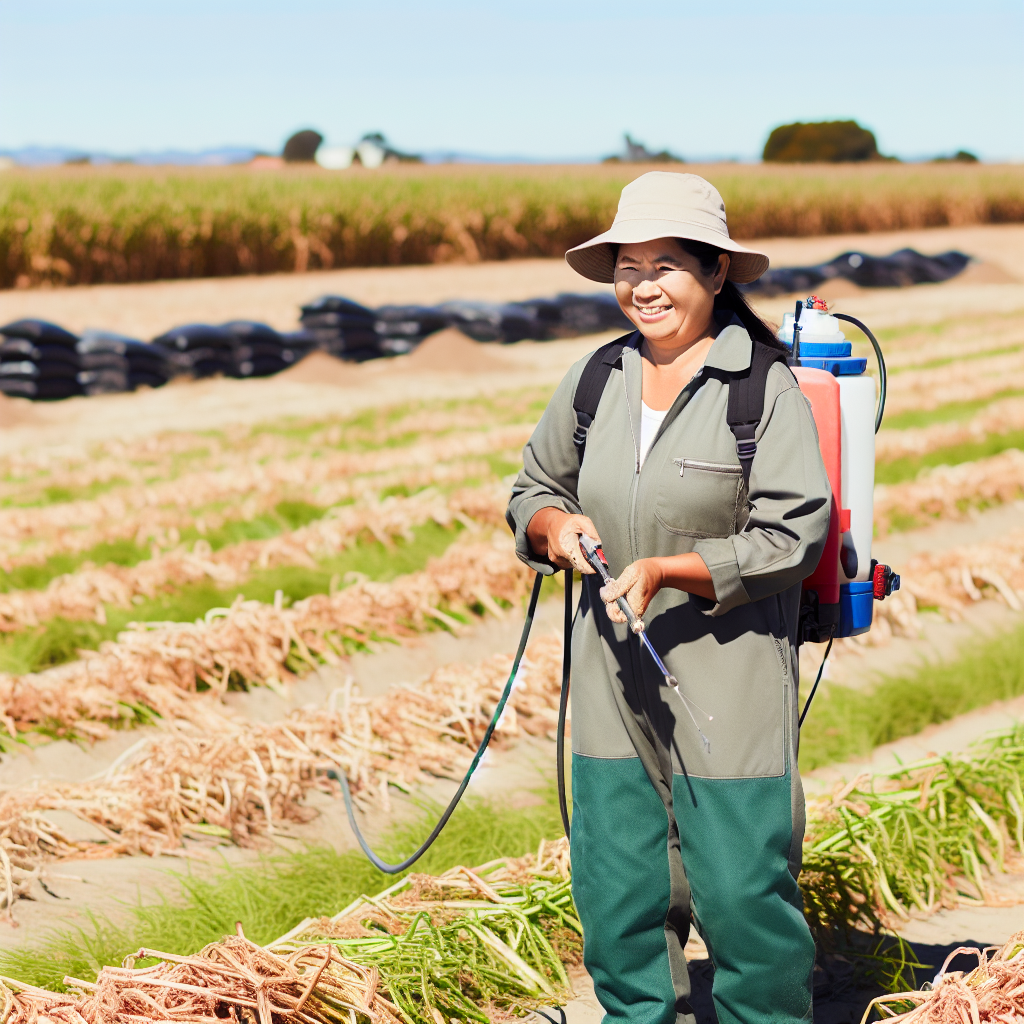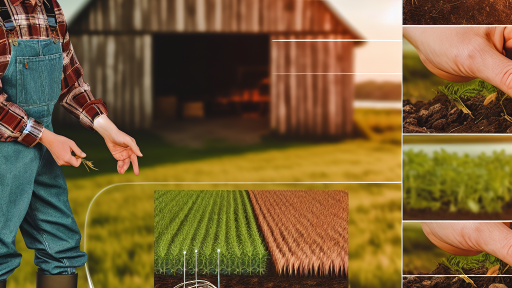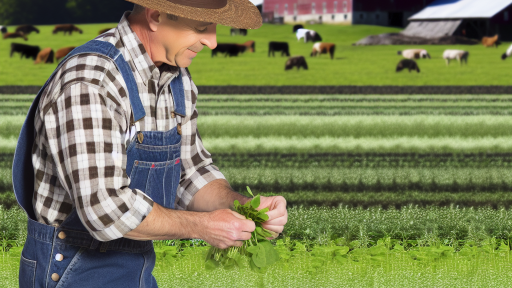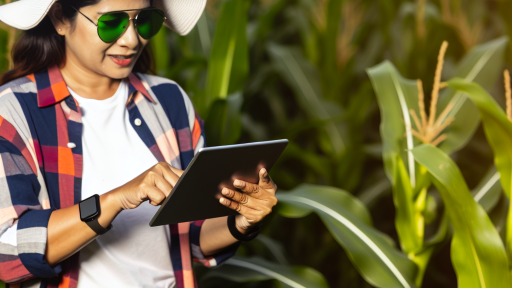Introduction to Integrated Pest Management after Harvest
Integrated Pest Management (IPM) is essential for controlling pests after harvesting.
This strategy emphasizes prevention, monitoring, and control techniques.
Farmers can use IPM to maintain post-harvest quality and safety.
Various methods are available under the IPM umbrella, allowing for flexibility.
Concept of IPM
IPM integrates cultural, biological, and chemical tactics to manage pests.
Understanding pest biology is crucial for effective implementation.
Farmers should also consider environmental factors influencing pest behavior.
Importance of Post-Harvest Management
Post-harvest losses can significantly impact food supply chains.
Effective pest management reduces spoilage and enhances marketability.
Furthermore, it helps maintain nutritional quality in stored products.
Core Components of IPM after Harvest
- Regular monitoring for pest presence is vital.
- Implementing sanitation practices can deter pest infestations.
- Utilizing appropriate storage methods prolongs shelf life.
Utilizing Cultural Practices
Cultural practices play a significant role in post-harvest IPM.
These practices include managing humidity and temperature in storage areas.
Properly selecting harvest times can also minimize pest attraction.
Biological Control Measures
Natural predators serve as an effective component of IPM.
For instance, introducing beneficial insects can help control pest populations.
Transform Your Agribusiness
Unlock your farm's potential with expert advice tailored to your needs. Get actionable steps that drive real results.
Get StartedAdditionally, microorganisms can be used to target specific pests.
Monitoring and Evaluation
Ongoing monitoring is essential for successful IPM implementation.
Farmers should assess pest populations regularly to inform decisions.
Documentation of pest occurrences allows for better planning in future seasons.
Role of Chemical Controls
If necessary, chemical controls can complement IPM strategies.
Using selective pesticides minimizes harm to beneficial species.
Farmers should always follow application guidelines to ensure safety.
Importance of Post-Harvest Pest Management in Agriculture
Protecting Crop Quality
Post-harvest pest management effectively protects harvested crops.
Pests can quickly reduce the market value of agricultural produce.
Consequently, farmers lose potential income due to pest infestations.
Effective management ensures that crops remain in excellent condition.
Minimizing Food Waste
Food waste presents a significant challenge in the agriculture sector.
Pests contribute to the spoilage of food products post-harvest.
Implementing pest management strategies reduces this waste.
As a result, consumers receive fresher products with a longer shelf life.
Enhancing Food Security
Food security is crucial for communities around the globe.
Effective pest management helps maintain stable food supplies.
By preventing crop loss, farmers contribute to local and national food security.
This, in turn, supports economic stability and growth.
Supporting Sustainable Practices
Sustainable farming practices are vital for environmental health.
Integrated pest management promotes the responsible use of pesticides.
It encourages using biological controls, which are less harmful.
Such practices better protect beneficial insect populations in the ecosystem.
Impact on Market Competitiveness
High-quality produce meets consumer demands in competitive markets.
Showcase Your Farming Business
Publish your professional farming services profile on our blog for a one-time fee of $200 and reach a dedicated audience of farmers and agribusiness owners.
Publish Your ProfileEffective post-harvest pest management can increase marketability.
Farmers who minimize pest damage gain a competitive edge.
This strategy leads to better pricing and consumer loyalty.
Encouraging Research and Development
Investing in pest management encourages agricultural innovation.
Research into pest control methods leads to improved practices.
Such efforts benefit not only farmers but entire communities.
Innovation helps address emerging pest challenges over time.
Key Principles of Integrated Pest Management in Post-Harvest Settings
Understanding Integrated Pest Management
Integrated Pest Management (IPM) combines multiple strategies for effective pest control.
It aims to minimize pest damage while reducing risks to people and the environment.
Furthermore, IPM considers the life cycles of pests and their natural enemies.
Monitoring and Identification
Monitoring involves regularly inspecting stored products for signs of pests.
Effective identification of pests is crucial for selecting the right management tactics.
Use traps and visual inspections to gather information on pest populations.
Regular monitoring helps determine if management actions are needed.
Prevention Strategies
Preventing pest infestations starts with proper storage practices.
Store products in clean, dry facilities to reduce pest attraction.
Seal entry points to stop pests from accessing stored goods.
Regularly clean storage areas to eliminate potential pest habitats.
Combination of Control Methods
IPM employs an array of control methods tailored to the pest issue at hand.
Mechanical control techniques include traps and vacuuming.
Cultural control methods involve adjusting storage conditions and practices.
Biological control can utilize natural predators or pathogens to manage pests.
Chemical control should be a last resort and used judiciously.
Evaluation and Adjustment
Regularly assess the effectiveness of the pest management strategies implemented.
Gather data to analyze the success of the chosen methods systematically.
Adjust strategies based on the results to enhance efficacy over time.
Continuous improvement is essential to adapt to changing pest populations.
Uncover the Details: Choosing the Right Cover Crop for Your Farm
Common Pests Affecting Post-Harvest Products and Their Impact
Introduction to Post-Harvest Pests
Post-harvest pests pose significant threats to stored agricultural products.
They can severely damage food quality and safety.
Understanding these pests is essential for effective pest management.
Types of Common Post-Harvest Pests
Several pests commonly affect post-harvest products.
These pests include insects, rodents, and fungi.
Each type causes distinct issues that can impact the stored goods.
Insect Pests
Insects are the most notorious post-harvest pests.
Common examples include weevils, moth larvae, and beetles.
These insects can infest grains, fruits, and vegetables.
Their feeding habits lead to significant losses in weight and quality.
Rodents
Rodents, such as rats and mice, also threaten stored products.
They not only consume food but also contaminate it with droppings.
Showcase Your Farming Business
Publish your professional farming services profile on our blog for a one-time fee of $200 and reach a dedicated audience of farmers and agribusiness owners.
Publish Your ProfileRodents can damage packaging and storage facilities.
Fungal Pests
Fungi, including molds and yeasts, are major contributors to post-harvest spoilage.
Mold growth can occur on fruits, vegetables, and grains.
This not only reduces shelf life but can produce harmful mycotoxins.
Impact of Pests on Post-Harvest Products
The impact of these pests is far-reaching and detrimental.
Infestations can lead to financial losses for producers and retailers.
Moreover, consumers may face health risks from contaminated food.
Economic Consequences
Pests result in direct economic losses by damaging products.
Additionally, the costs of mitigation measures can be substantial.
Businesses may need to invest in pest control and prevention strategies.
Health Risks
Food contaminated by pests poses health hazards to consumers.
This contamination can lead to foodborne illnesses and allergies.
Effective pest management is vital for maintaining food safety.
Summary of Pest Management Strategies
Implementing integrated pest management (IPM) is crucial for post-harvest products.
This approach combines various strategies to control pest populations efficiently.
Education and awareness among producers and retailers can enhance food safety.
Discover More: Remote Sensing Technologies In Agricultural Management
Cultural Practices to Minimize Pest Infestations After Harvest
Implementing Crop Rotation
Crop rotation significantly disrupts pest life cycles.
This method reduces the build-up of pests in the soil.
Practitioners rotate crops with different families each season.
Consequently, this practice enhances soil fertility too.
Properly Managing Harvest Residues
Proper disposal of plant residues is essential.
Leaving residues can attract pests and insects.
Farmers should consider tilling or incorporating residues into the soil.
This action aids in breaking down organic matter.
Implementing Sanitation Procedures
Regular sanitation prevents pest infestations effectively.
Farmers must clean equipment and storage facilities frequently.
Eliminating pest habitats is also crucial.
This includes managing weeds and debris around the farm.
Utilizing Trap Crops
Trap crops divert pests away from main crops.
Farmers can plant specific varieties that attract pests.
These crops draw pests in, reducing damage to main crops.
Afterward, pest management can focus on the trap crop.
Promoting Natural Predators
Encouraging beneficial insects supports pest control naturally.
Farmers can plant flowers that attract ladybugs and lacewings.
These predators help manage pest populations without chemicals.
Creating habitats for these insects fosters a balanced ecosystem.
Monitoring and Assessment
Regularly inspecting crops identifies potential pest issues early.
Farmers should implement monitoring traps to track pest presence.
Data from these assessments guides effective pest management decisions.
Showcase Your Farming Business
Publish your professional farming services profile on our blog for a one-time fee of $200 and reach a dedicated audience of farmers and agribusiness owners.
Publish Your ProfileAdditionally, timely interventions can save crops from severe damage.
You Might Also Like: Best Cover Crops to Improve Soil Fertility
Biological Control Measures for Managing Pests Post-Harvest
Introduction to Biological Control
Biological control utilizes natural predators and parasites to manage pests.
This approach minimizes the reliance on chemical pesticides.
As a result, it supports a sustainable agricultural system.
Types of Biological Control Agents
Different types of biological control agents can effectively combat post-harvest pests.
Predators actively hunt and consume pest populations.
- Lady beetles target aphids.
- Lacewings feed on various pests during their larval stage.
Parasitoids lay their eggs in host pests, leading to their demise.
- Trichogramma wasps parasitize caterpillar eggs.
- Microctonus wasps specifically target weevil larvae.
Pathogens such as bacteria, fungi, and viruses can also play a role.
- Bacillus thuringiensis (Bt) is effective against caterpillars.
- Beauveria bassiana is used for various insect pests.
Application Methods
Applying biological control agents requires careful planning and execution.
One method involves releasing beneficial insects into storage areas.
Another involves introducing pathogens to target pest populations effectively.
Benefits of Biological Control
Utilizing biological control offers numerous advantages for pest management.
First, it reduces environmental impact compared to chemical alternatives.
Secondly, it promotes biodiversity in agricultural ecosystems.
Additionally, biological control can help suppress pest resistance development.
Challenges in Implementation
Despite its benefits, biological control has challenges in implementation.
Understanding the life cycle of both pests and beneficial organisms is crucial.
Moreover, maintaining effective populations of control agents can be complex.
Case Studies and Success Stories
Real-world examples demonstrate the effectiveness of biological control measures.
A considerable success was reported in apple storage through parasitoids.
Similarly, using predatory mites improved quality in fruit storage.
Future Directions
The future of biological control lies in integrating advanced techniques.
Research is ongoing in enhancing the effectiveness of various agents.
Furthermore, combining biological methods with other pest management strategies may yield better results.
Gain More Insights: Mulching for Pest Management in Crop Cultivation

Chemical Control Options
Overview of Chemical Control
Chemical control plays a significant role in post-harvest pest management.
It involves the use of pesticides to manage pests after harvesting crops.
This method aims to reduce pest damage during storage and transportation.
Pros of Using Pesticides
Pesticides provide fast and effective control of pest populations.
They can quickly reduce infestations and protect stored products.
In many cases, pesticides are cost-effective for large-scale operations.
Furthermore, they often have residual effects that offer prolonged protection.
Cons of Using Pesticides
Despite their benefits, pesticides come with significant drawbacks.
Over-reliance on chemical control can lead to pesticide resistance in pests.
This resistance can result in reduced efficacy over time.
Additionally, pesticides may pose health risks to humans and non-target organisms.
They can contaminate water sources and negatively impact ecosystems.
Alternatives to Pesticides
Exploring alternatives to pesticides can be beneficial for long-term management.
Practices such as the use of biological controls may help.
Showcase Your Farming Business
Publish your professional farming services profile on our blog for a one-time fee of $200 and reach a dedicated audience of farmers and agribusiness owners.
Publish Your ProfileIntegrating physical barriers like traps or nets can also reduce pest access.
Moreover, adopting appropriate storage conditions can minimize pest attraction.
Integrated Approaches
Combining chemical control with other methods enhances effectiveness.
Integrated Pest Management (IPM) emphasizes this approach.
IPM considers multiple factors, such as pest life cycles and environmental conditions.
This strategy aims to reduce reliance on chemical treatments alone.
Monitoring and Scouting Techniques for Pest Detection After Harvest
Importance of Post-Harvest Monitoring
Post-harvest monitoring is crucial for maintaining crop quality.
It helps identify pest issues before they escalate.
Additionally, it plays a key role in protecting future crops.
Visual Inspection Techniques
Regular visual inspections are essential in pest detection.
Inspect storage facilities frequently to spot signs of infestation.
Check for damaged packaging, which can indicate pest presence.
Also, examine the crops closely for unusual signs such as discoloration.
Using Traps for Pest Monitoring
Trapping is an effective method for monitoring pest populations.
Select appropriate traps based on target pest species.
Place traps in strategic locations within storage areas.
Regularly check traps and record captured pests for analysis.
Employing Technology for Enhanced Monitoring
Technology can significantly improve pest monitoring efforts.
Consider using pest detection software to analyze data trends.
Remote sensing technology can also detect signs of infestation early.
Furthermore, drones can help monitor larger agricultural areas efficiently.
Engaging in Regular Scouting
Conduct systematic scouting to assess pest threats adequately.
This involves checking different parts of storage facilities regularly.
Document findings to build a clear picture of pest activity.
Share your observations with other stakeholders in the industry.
Collaboration with Local Experts
Collaboration can enhance pest detection efforts significantly.
Work with local agricultural experts for guidance on pest management.
They can share valuable insights based on regional pest trends.
Networking with others in your area can also provide support.
Implementing Integrated Pest Management Strategies
Integrated Pest Management (IPM) combines various pest control methods.
It may include cultural, biological, and chemical controls.
Prioritize non-chemical methods to minimize environmental impacts.
Monitor the effectiveness of chosen methods regularly.
Case Studies: Successful IPM Strategies Implemented in Post-Harvest Environments
Overview of IPM in Post-Harvest Settings
Integrated Pest Management (IPM) plays a crucial role in post-harvest environments.
This strategy reduces pest populations effectively while minimizing risks.
Moreover, it focuses on sustainable practices to protect stored products.
Case Study: GreenGro Farms
GreenGro Farms adopted an IPM approach to manage pest issues in their storage facilities.
Initially, they faced significant losses due to insect infestations.
To address this, they implemented regular monitoring of pest populations.
They employed pheromone traps to track pests actively.
Showcase Your Farming Business
Publish your professional farming services profile on our blog for a one-time fee of $200 and reach a dedicated audience of farmers and agribusiness owners.
Publish Your ProfileAdditionally, they introduced beneficial insects to control pest populations naturally.
As a result, GreenGro Farms reduced losses by 30% within a year.
Case Study: FreshHarvest Co.
FreshHarvest Co. focused on sanitation and environmental modifications.
They established strict cleaning protocols for their storage facilities.
This step minimized pest breeding and effective management.
They also optimized the storage temperature and humidity levels.
Consequently, FreshHarvest experienced a 25% drop in pest-related damage.
Case Study: NaturalBite Products
NaturalBite Products leveraged technology for pest management.
They installed smart monitoring systems throughout their warehouses.
This technology provided real-time data about pest activities.
Furthermore, it allowed immediate responses to mitigate risks.
By combining technology with traditional methods, they saw a 40% reduction in pest populations.
Lessons Learned from Successful IPM Strategies
Effective IPM strategies require an integrated approach tailored to specific environments.
Regular monitoring and adjustments are vital for ongoing success.
Collaboration among team members enhances implementation and effectiveness.
Utilizing a combination of methods can lead to significant improvements.
Finally, adapting strategies based on outcomes boosts resilience against future infestations.
Future Directions for IPM in Post-Harvest Systems
Embracing Technology
Technological advancements play a crucial role in IPM strategies.
They enhance monitoring and detection of pest populations.
Furthermore, data analytics can predict pest outbreaks more accurately.
Smart sensors can provide real-time information on storage conditions.
Adopting these technologies will significantly reduce post-harvest losses.
Promoting Sustainable Practices
Sustainability must remain at the forefront of post-harvest IPM.
Farmers should implement environmentally friendly pest control methods.
Organic practices can lead to healthier food systems.
Additionally, integrating biological control methods is essential.
This can help maintain ecological balance while managing pests.
Enhancing Education and Training
Education is vital for effective implementation of IPM strategies.
Training programs should focus on best practices for pest management.
Farmers need resources to understand IPM benefits.
Partnerships with agricultural universities can improve knowledge transfer.
Community workshops can facilitate local farmer engagement.
Enhancing Collaboration
Collaboration between stakeholders is essential for effective IPM.
Governments, researchers, and farmers must work together.
Public-private partnerships can support innovative research projects.
Additionally, shared knowledge can improve pest management strategies.
Establishing networks can promote information exchange across regions.
Additional Resources
Integrated pest management strategies for sustainable food production




